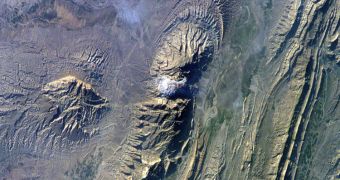Over the past 45 million years or so, a general cooling trend has been affecting the planet, turning Earth into a large refrigerator, and promoting prolonged, Ice Age-like periods. Scientists have been puzzled by this trend for a very long time, but a team may have recently cracked the mystery.
According to investigators at the University of Toronto, in Canada, the chemistry of the world's oceans may have had everything to do with the evolution of the global climate. The team explains that prolonged periods of stability in ocean chemistry are usually intertwined with periods of rapid change.
The latter are very short, but they have the potential to trigger significant changes in the natural cycles where the oceans are involved. Details of how this happened in the distant past appear in a paper published in the latest issue of the top journal Science.
University of Toronto geoscientist Ulrich Wortmann, the leader of the research group, conducted the investigation with coauthor Adina Paytan, who is based at the University of California in Santa Cruz.
“We've established a new framework that helps us better interpret evolutionary trends and climate change over long periods of time. The study focuses on the past 130 million years, but similar interactions have likely occurred through the past 500 million years,” Wortmann explains.
Apparently, the climate changes that occurred 43 million years ago were set in motion by the dissolution of a belt of gypsum, located between Oman and Pakistan. This occurred as the result of a massive collision between the Indian and Eurasian tectonic plates.
The event took place around 50 million years ago, and promoted the disintegration of the water-soluble gypsum. The latter was concentrated in the most extensive belt of gypsum that ever existed. As a direct result of the belt's dissolution, the ocean's sulfate content increased significantly.
In turn, this led to an increase of sulfate aerosols in the atmosphere, which significantly altered the global climate. “We propose that times of high sulfate concentrations in ocean water correlate with global cooling, just as times of low concentrations correspond with greenhouse [warmer] periods,” Paytan explains.
“When India and Eurasia collided, it caused dissolution of ancient salt deposits, which resulted in drastic changes in seawater chemistry,” the expert adds. The change was brief, but enough to cause long-lasting climatic effects, the team concludes.
Funding for the research came in part from the US National Science Foundation (NSF).

 14 DAY TRIAL //
14 DAY TRIAL //